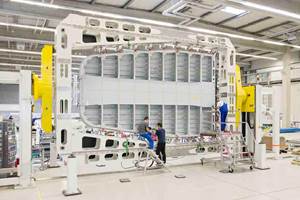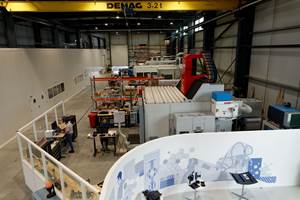The positive consequences of regulating styrene
In 1859, Thomas Austin imported 24 wild rabbits from England and released them into the Victoria, Australia, countryside to provide animals for sport hunting.
In 1859, Thomas Austin imported 24 wild rabbits from England and released them into the Victoria, Australia, countryside to provide animals for sport hunting. The rabbits, doing what rabbits notably do, multiplied voraciously, destroying vegetation and crops as they spread north and west across the continent. With no natural predators in Australia, the rabbit population rose to an estimated 10 billion by the late 1920s. The world’s longest rabbit fence, stretching 1,138 miles/1,831 km from north to south in Western Australia, was erected with only limited success. Although Austin’s intentions might have been good, the outcome was anything but.
Such stories exemplify the proverbial law of unintended consequences, in which what is believed to be a simple solution to a problem runs into a complex system of interactions that leads to a negative outcome. A more recent example is regulation that drives the production of ethanol as a fuel additive to reduce oil imports, but then drives up the demand for corn, resulting in higher food prices.
Some argue that government regulations always have detrimental consequences, but one only has to visit Shanghai, China, to be reminded that the 1970 Clean Air Act in the U.S. has been a positive for our major cities. There was considerable gnashing of teeth and claims of economic peril in the wake of the law’s passage, but out of the law arose a lot of new pollution-control technology, both for automobiles and smokestack industries. The composites industry benefitted because of the inherent corrosion resistance of polyesters and vinyl esters used in scrubbers and effluent piping.
In the composites industry, we have seen several decades of regulations targeting styrene, out of concern about air pollution and suspected carcinogenic toxicity. Styrene is an extremely important and cost-effective reactive diluent for polyester and vinyl ester resins, enabling the low viscosities needed to promote flow, sprayability and wetout of fiberglass and other reinforcements. Legislation, starting with California’s Proposition 65 and the later U.S. Environmental Protection Agency’s (EPA) Maximum Achievable Control Technology (MACT) standards, was met initially by strong opposition from the composites industry supply chain, citing large reductions in industry employment and loss of competitiveness against foreign rivals that aren’t restricted by such legislation.
Having observed the long-term effects of these regulations, I am firmly of the opinion that their consequences have been mostly positive, well beyond worker safety and reduction of VOCs. How? The quality and performance of composites produced with polyesters and vinyl esters have greatly improved, making composites ever more competitive against traditional materials, such as wood, concrete and metals. I’m not sure these advances would have been achieved if the industry hadn’t been pushed out of its comfort zone.
Take, for example, the large-scale migration from open molding to closed molding, in particular, the growth of vacuum resin infusion (in all its various forms and acronyms). Rather than thick, resin-rich parts made by chopper guns and manual rolling, today’s boats, bridge decks, wind turbine blades and pollution-control systems incorporate structural multidirectional fabrics and use less resin, yielding thinner, lighter and stronger structures. A whole industry has developed to support large-part infusion, resulting in greater competitiveness and new jobs. Where open molding is still preferred, sprayup is done by robots following a preprogrammed path. The result is less part-to-part variation and less resin use. Styrene contents of 45 percent used to be standard. Reformulation and new chemistries have reduced this to 25 to 30 percent in many cases. Filament winding, pultrusion and compression molding also have benefitted from these new resins. Workers are better protected, fewer VOCs are emitted, and the industry is more competitive.
We have all of the above thanks to an industry full of talented scientists and engineers, and the future of styrene-diluted composite resins looks positive. But there is still one major battle to fight: the listing of styrene as a suspect carcinogen in the 12th Report on Carcinogens (ROC), issued by the National Toxicology Program (NTP). Fortunately, through the excellent efforts of the American Composites Manufacturers Assn. (ACMA, Arlington, Va.) and other industry groups, the National Research Council (Washington, D.C.) has agreed to conduct a peer review of the NTP’s listing. Here is a situation where we should not err on the side of caution. Instead, we should trust the real science that shows styrene is safe, and I am optimistic that the right outcome will prevail.
And that rabbit problem in Australia? Through the introduction of virus-carrying insects starting in the 1950s, today’s population is estimated at 200 million, a 98 percent reduction since 1930. It’s one more example of good science and innovative technology meeting the challenge.
Related Content
From the CW Archives: Airbus A400M cargo door
The inaugural CW From the Archives revisits Sara Black’s 2007 story on out-of-autoclave infusion used to fabricate the massive composite upper cargo door for the Airbus A400M military airlifter.
Read MorePlant tour: Daher Shap’in TechCenter and composites production plant, Saint-Aignan-de-Grandlieu, France
Co-located R&D and production advance OOA thermosets, thermoplastics, welding, recycling and digital technologies for faster processing and certification of lighter, more sustainable composites.
Read MoreWelding is not bonding
Discussion of the issues in our understanding of thermoplastic composite welded structures and certification of the latest materials and welding technologies for future airframes.
Read MorePlant tour: Collins Aerospace, Riverside, Calif., U.S. and Almere, Netherlands
Composite Tier 1’s long history, acquisition of stamped parts pioneer Dutch Thermoplastic Components, advances roadmap for growth in thermoplastic composite parts.
Read MoreRead Next
HHS styrene ruling: Bad science, bad for the composites industry
Tom Hedger, president of Magnum Venus Plastech (Clearwater, Fla.) and a board member of the the American Composites Manufacturers Assn. (ACMA, Arlington, Va.) joins the chorus of disapprovval that has greeted U.S Health and Human Services Secretary Kathleen Sebelius' approval of styrene's classification as a likely carcinogen.
Read MoreUltrasonic welding for in-space manufacturing of CFRTP
Agile Ultrasonics and NASA trial robotic-compatible carbon fiber-reinforced thermoplastic ultrasonic welding technology for space structures.
Read MoreNext-gen fan blades: Hybrid twin RTM, printed sensors, laser shock disassembly
MORPHO project demonstrates blade with 20% faster RTM cure cycle, uses AI-based monitoring for improved maintenance/life cycle management and proves laser shock disassembly for recycling.
Read More











